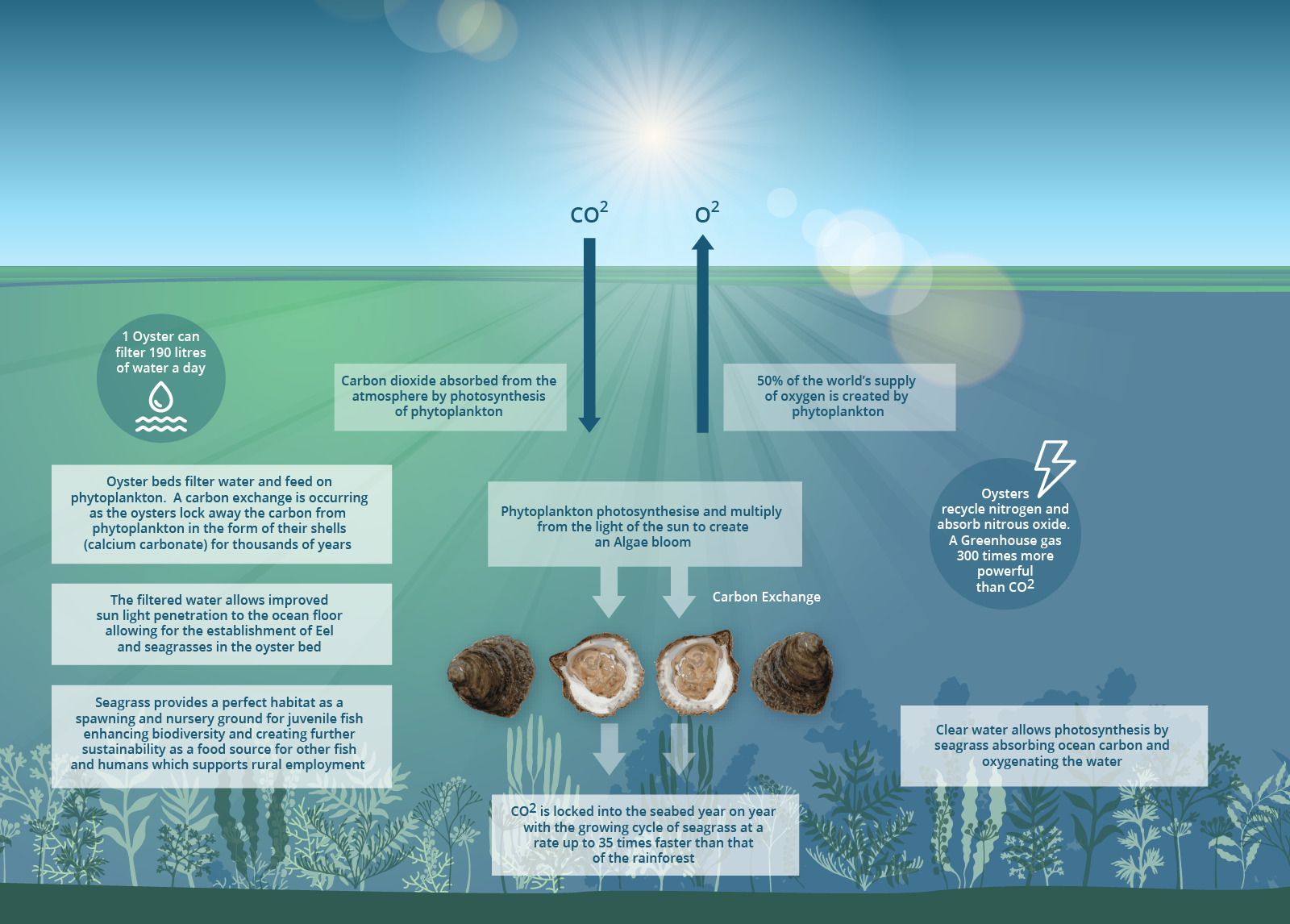Our Humble Ally Against Climate Change
HOW OYSTERS SUSTAIN OUR PLANET’S HEALTH & SAFEGUARD OUR FUTURE
Oysters are powerful eco-engineers that keep the ocean in good health.
The ocean works hard to maintain life on Earth. It generates 50% of the oxygen we need. It absorbs 25% of all carbon dioxide emissions and captures 90% of the excess heat generated by these emissions.
We need to make sure we support these processes, not hinder them.
A Healthy Planet Begins with a Balanced Ocean
The ocean is a tapestry of interconnected relationships that need balance to thrive.
It all starts with phytoplankton. They may be small but all life on Earth depends on these microscopic algae. Phytoplankton absorb carbon dioxide and produce oxygen through photosynthesis. 50% of the world’s oxygen supply is produced by phytoplankton so a stable population of these organisms is essential for sustaining life on our planet.
But balance is key. Too much phytoplankton (or algae bloom) is harmful, causing murky water and preventing other important species like seagrass from thriving.
A Natural & Efficient Way to Combat Greenhouse Gases
This is where oysters come in. Oysters feed on phytoplankton and continuously filter the water. One oyster filters 190 litres of seawater a day! Acting as natural filtration systems, oysters maintain a balanced ocean and keep algae bloom in check.
As the oysters feed they consume the carbon absorbed by the phytoplankton. This carbon is then used by the oysters to build their shells as they mature. This carbon will be locked away in the oysters’ shells for hundreds of thousands of years!
Oysters also capture and store nitrogen from the ocean. Nitrogen stems from water running off the land which can cause harmful algae blooms to spread. By feeding on phytoplankton, oysters process nitrous oxide, a greenhouse gas 300 times more damaging than carbon dioxide.
Boosting Seagrass Growth & CO2 Absorption
Thanks to the oysters filtering plankton and other particles from the water, seagrass and seaweed beds can flourish. Clearer water means sunlight can penetrate down to the seafloor, allowing underwater forests to prosper.
Healthy marine plant life is essential for absorbing greenhouse gasses and tackling climate change. Seagrass is one of Earth’s most efficient carbon dioxide sinks, it locks carbon away at a rate up to 35 times more than the rainforest.
The Essential Role of Oysters
A Long Term Sustainable Solution
Oysters rely on safety in numbers to survive rough sea conditions. Over time, small groups of oysters develop into large reefs by growing on top of and next to each other. The nooks and crannies of the reefs offer the perfect habitat for small fish to live and spawn. An abundance of marine life attracts larger fish resulting in a strong balanced ecosystem. The impact reaches beyond the ocean. Healthy fish populations support fishing and in turn, strengthen the social and economic fabric of local Irish communities.
Coastal Guardians
Ocean warming will increase the intensity of storms, resulting in coastal flooding and erosion. Oyster reefs protect the coastline by acting as a buffer against waves and storm surges. The oyster reefs provide a nature-based solution to coastal erosion and protect human communities, infrastructure and crucial ecosystems from destruction.
Help Keep Our Ocean Healthy
Oysters are tireless workers. They have an amazing ability to help create a liveable world for us today and for years to come. You can help us combat climate change in Ireland now. Chat with us about making the switch to Green Ocean Coffee.


